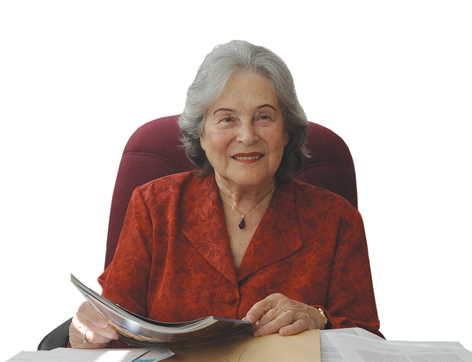Are you a journalist? Please sign up here for our press releases
Subscribe to our monthly newsletter:

Prof. Ruth Arnon remembers the day she decided to join the Weizmann Institute. She was a young chemistry student at the Hebrew University of Jerusalem, then spread out in various locations around the city. One of her teachers, Prof. Aharon Katchalski-Katzir (brother of Prof. Ephraim Katzir, later the fourth president of Israel), led her class on a tour of the Institute. "There were only a few buildings then," recalls Arnon, "but the main building, with its stately entrance and well-equipped labs, seemed to me a temple of science. I went home and told my parents that this is where I wished to study and work."
Arnon would have to wait until she completed her M.Sc. and her army service. She began her studies under Prof. Ephraim Katzir and finished them under Prof. Michael Sela, who had recently taken up a position at the Institute. "I was Sela's first student. There was no Immunology Department then – it was we who began immunology research at the Institute – and there were almost no animal research facilities; I had to go to the university in Jerusalem to do the experiments."
She researched synthetic polymers that had first been developed by Ephraim Katzir. In Sela's lab, she developed protein-like polymers with defined immunological properties that could be used as research tools.
Following a postdoc in the U.S., she continued her synthetic polymer research, much of it with Sela. They discovered that one polymer could prevent the symptoms of an experimental disease, the animal model for multiple sclerosis, and went on to patent it. In the years since, Arnon has elucidated how the polymer, marketed under the name Copaxone®, works and explored new applications for the compound. She has also created a long-term synthetic flu vaccine, now under development in a start-up company; investigated the immunology of bilharzia, a parasitic disease; and worked on techniques for targeting cancer cells. Arnon has received numerous prizes, including the Wolf Prize in Medicine, and has served as Vice President of the Weizmann Institute.